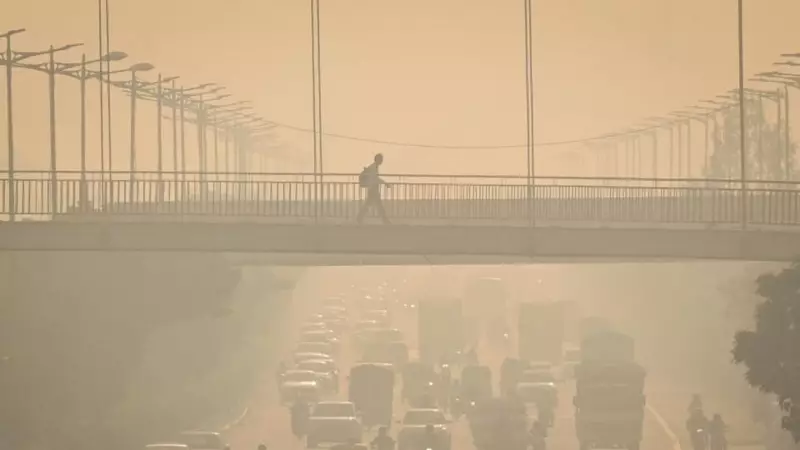
Delhi residents woke up to a hazardous Diwali morning as the national capital's air quality index (AQI) plummeted into the 'severe' category, casting a toxic shadow over the festival of lights. Despite the active implementation of GRAP-2 pollution control measures, the city found itself choking under a thick blanket of smog.
Pollution Levels Cross Critical Threshold
Multiple monitoring stations across Delhi recorded AQI readings well above 400, pushing the overall air quality into the severe zone. The concentration of PM2.5 – the most dangerous particulate matter that can penetrate deep into lungs – reached alarming levels, making breathing difficult for many residents.
GRAP-2 Measures Prove Inadequate
The Graded Response Action Plan (GRAP) Stage-2 restrictions, which include:
- Ban on diesel generators
- Increased parking fees
- Enhanced public transport services
- Strict dust control at construction sites
failed to prevent the air quality crisis. Environmental experts point to multiple factors contributing to the situation, including firecracker emissions, stubble burning from neighboring states, and unfavorable meteorological conditions.
Health Advisory Issued
Medical professionals have issued urgent health advisories, recommending:
- Avoid outdoor activities, especially morning walks
- Wear N95 masks when stepping out
- Keep doors and windows closed
- Use air purifiers indoors
- Stay hydrated and monitor respiratory symptoms
The severe air quality poses significant risks, particularly for children, elderly citizens, and those with pre-existing respiratory conditions like asthma and bronchitis.
Long-term Solutions Needed
While immediate measures provide temporary relief, environmental activists emphasize the need for comprehensive, year-round pollution control strategies. The recurring nature of Delhi's air quality crisis during festival seasons highlights the urgent requirement for sustainable solutions that balance tradition with environmental responsibility.





